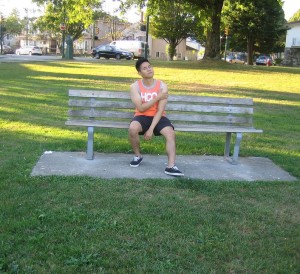Frozen shoulder or adhesive capsulitis is a condition that is characterized by stiffness and pain in the joint of the shoulder. The symptoms occur gradually but can become worse over time.
A person is at risk for developing a frozen shoulder while recovering from certain medical condition procedures that affects the mobility of the arm such stroke or mastectomy.
Frozen shoulder can be treated by stretching exercises and injection of corticosteroid as well as numbing medications in the joint capsule but in some cases surgery is needed in order to loosen the joint capsule so that it can move freely. You can learn how to manage this condition by enrolling in a class on first aid today.

Symptoms of frozen shoulder
Frozen shoulder develops in three stages and each stage can last for a number of months.
- The first stage is the painful stage where there is pain with any movement of the shoulder while the range of motion of the shoulder is reduced.
- The second stage is the frozen stage, in which the pain begins to weaken but the shoulder becomes stiff and the range of motion of the shoulder is still reduced.
- The third stage is the thawing stage where there is improvement in the range of motion of the shoulders.
Sometimes, the pain is worse during nighttime and causes disruption of the normal sleeping patterns.
Causes of frozen shoulder
The ligaments, bones and tendons that make up the shoulder are wrapped in a capsule of connective tissues. Frozen shoulder can happen when this capsule becomes thick and tight around the joints of the shoulder. This will cause restriction of the movement. Frozen shoulder can happen to those who experienced prolonged immobilization of the shoulders such as after surgery or fracture of an arm.
Some factors that increase the risk of having frozen shoulder include individual ages 40 and older. Women are more likely to develop frozen shoulder. Those who have a broken arm, suffering from stroke, rotator cuff injury and those recovering from surgery face a high risk of having frozen shoulder.
Treatment and home remedies
- Take anti-inflammatory medications and analgesics to reduce the swelling and minimize the pain caused by the pulled muscles.
- Use a home massage tool to help in relaxing the muscles and prevent release of chemicals that cause severe inflammation of the joint.
- Apply gentle pressure and rub the muscles of the shoulders in order to relieve pain and stimulate circulation.
- Follow the RICE method of treatment which involves resting the affected area, apply ice and heat compress alternately at least 20 minutes of ice compress and then followed by 20 minutes of hot compress or heated pad. Ice compress will reduce swelling while warm compress will increase the blood flow and can also help in removing toxins.
- Apply compression to the injured muscle with a bandage to help reduce the swelling and help in the healing process.
- During resting, elevate the affected area so that the swelling will drain from the muscles.
- Avoid smoking since it causes a decrease in the flow of blood which can obstruct the ability of the body to heal its own tissues.